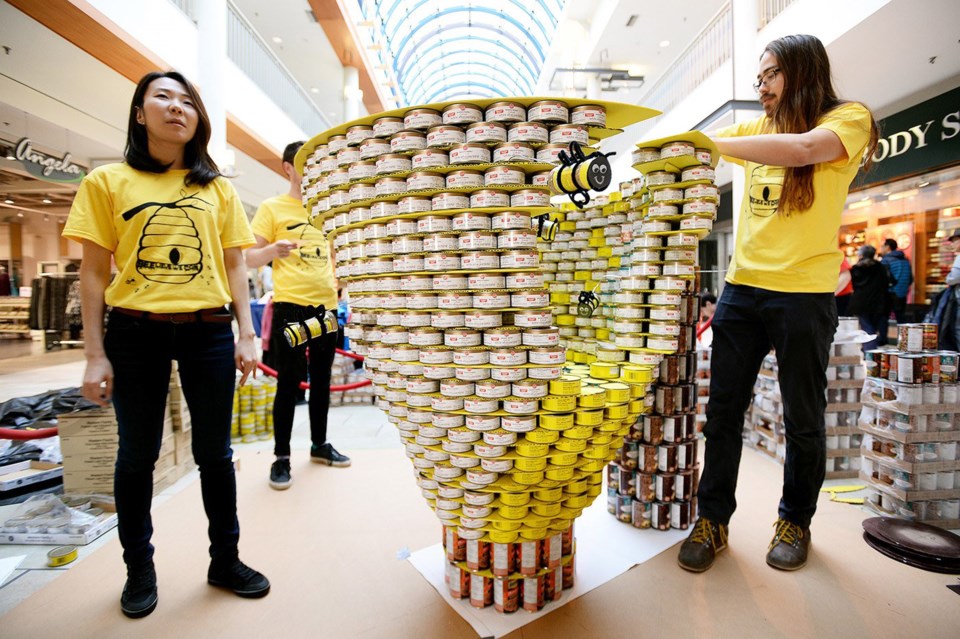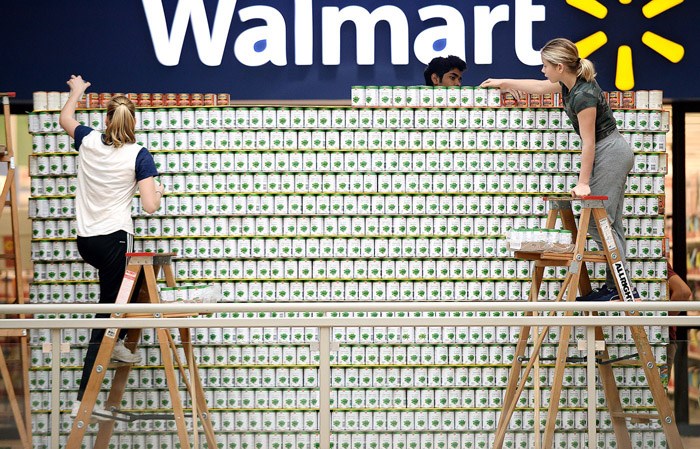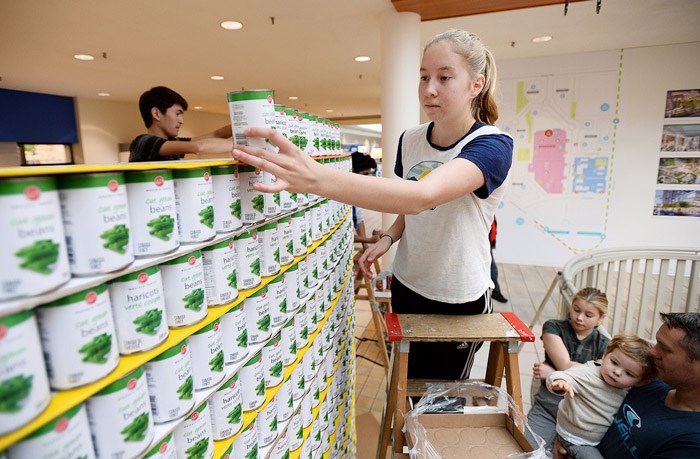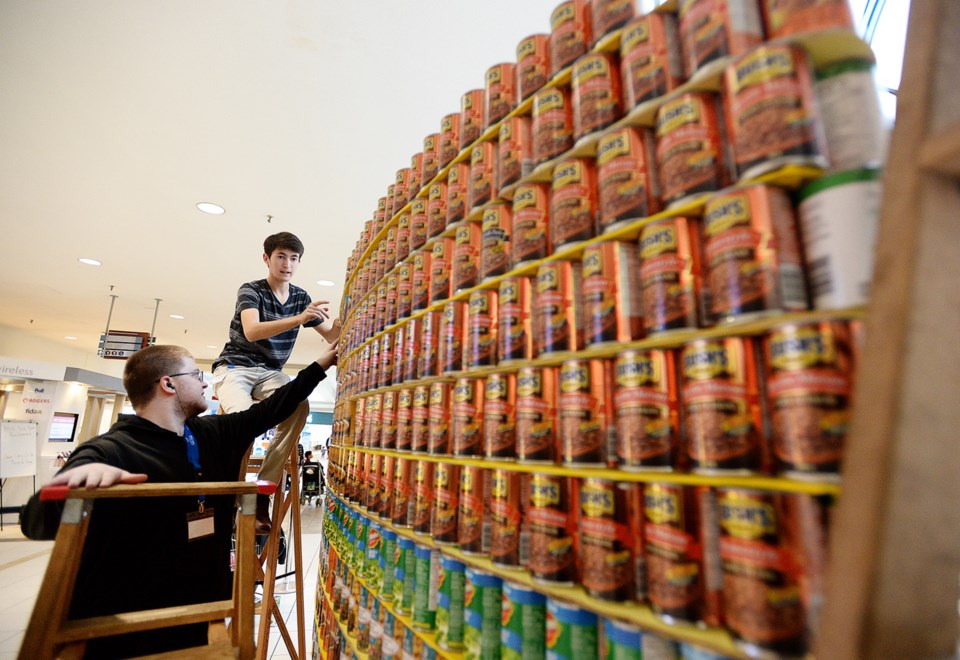Charity and engineering came together at Lougheed Town Centre on Saturday as teams competed to build structures out of food cans – the food was going to the Greater Vancouver Food Bank and the construction know-how came from architects, engineers, design students and drafting high school students.
Each team was challenged to build a structure of cans – around 4,000 for each team – based on the theme “it takes a village,” and designs included Whoville, a beehive, HaCANa Matata, a village of Smurfs and CANada (with an explanation that “Canada” comes from the Huron-Iroquois word “Kanata” which means village).
Cynthia Kinsella, chief development officer for Greater Vancouver Food Bank, which distributes food in Burnaby, New Westminster, North and West Vancouver and Vancouver, said CANstruction will raise up to 25,000 pounds of food for the food bank, but also it will raise awareness about the non-profit that distributes food weekly.

She pointed out the food bank has seen a 30-per-cent increase in demand over the past year, while donations have been down.
“When you see your donations going down and needs going up, you hit a crisis,” she said.
Students from UBC’s applied sciences faculty and the School of Architecture and Landscape Architecture combined cans of beans, corn and tomatoes in a structure of a giant tomato surrounded by corn stalks, symbolizing the unequal access people have to nutritious food – one can see the tomato, but it is out of reach.
“Corn is an accessible grain – it’s cheaper but not as nutritious (as tomatoes),” explained Kaili Sun, an environmental design student. Barriers to accessing healthy food can be financial, social or political. “You can see through the wall (of corn) but you can’t reach it,” he added.
Students from New Westminster Secondary teamed up with Bosa Construction to build a 10-foot-high structure from colourful cans called HaCANa Matata, a visual scene from the movie Lion King.
The structure the students were creating at Lougheed Town Centre required design thinking, empathy (“why do we care?”), thinking outside the box, then thinking inside the box, problem solving, physics, math, AutoCAD design and 3D printing, explained drafting teacher Val Pontier as he helped the students create cardboard pieces needed to hold up their structure.

Gary Pattern, New Westminster school district facilitator, said CANstruction fits well into the new curriculum being introduced into schools across the province.
In tech education, the focus is always on problem solving, Pattern said, and this is now embedded into all curriculum.
“It takes weeks to problem solve and get to this point,” Pattern said. Even being off by an eighth of an inch in their structure can make huge difference, he added.
Tech education and projects like CANstruction help students develop skills that employers are looking for, Pattern explained.
“Kids need to have knowledge, good attitude and skills when they graduate,” he said. “Some of those things aren’t taught in the classroom.”
The crew at Fast & Epp had spent their lunch hours this week doing final preparations for their beehive for CANstruction, which they were creating jointly with SFU Community Trust. This is the fourth time the Vancouver-based company is involved in the fundraising event, and twice in the past they’ve won the structural ingenuity category at the “Acanemy Awards.”
The beehive will be eight feet tall and will be lit up, explained Nikki Johnston, marketing coordinator with Fast & Epp
“For us as engineers, we want to contribute back to society,” said Johnston. “(It’s) a great way to merge a great campaign with the work we do.”
A calculation by Caroline Manuel with Greater Vancouver Food Bank, showed the Whoville construction was contributing 48,272 grams of protein to the food bank.

Those who frequent the food bank tend to have higher instances of chronic diseases, Manuel pointed out, which is why they focus on nutritious food and also work with nurses from Vancouver Coastal Health. Their tagline is “building strong and connected through the power of food,” she added.
The food bank has been focusing on distributing healthy food to its clients, especially hearty meals with a lot of protein, Kinsella explained. They are asking for donations like natural nut butters, canned fish, canned chicken, canned beans, soups and stews.
The 10 teams started building at 6:30 a.m. and had 12 hours to complete their structures. The structures will be on display until Nov. 10 and anyone can vote on their favourite design with a donation of $5 or three cans of food. All the cans and cash donations will go to the Greater Vancouver Food Bank, which serves 27,000 people weekly in 13 communities.



